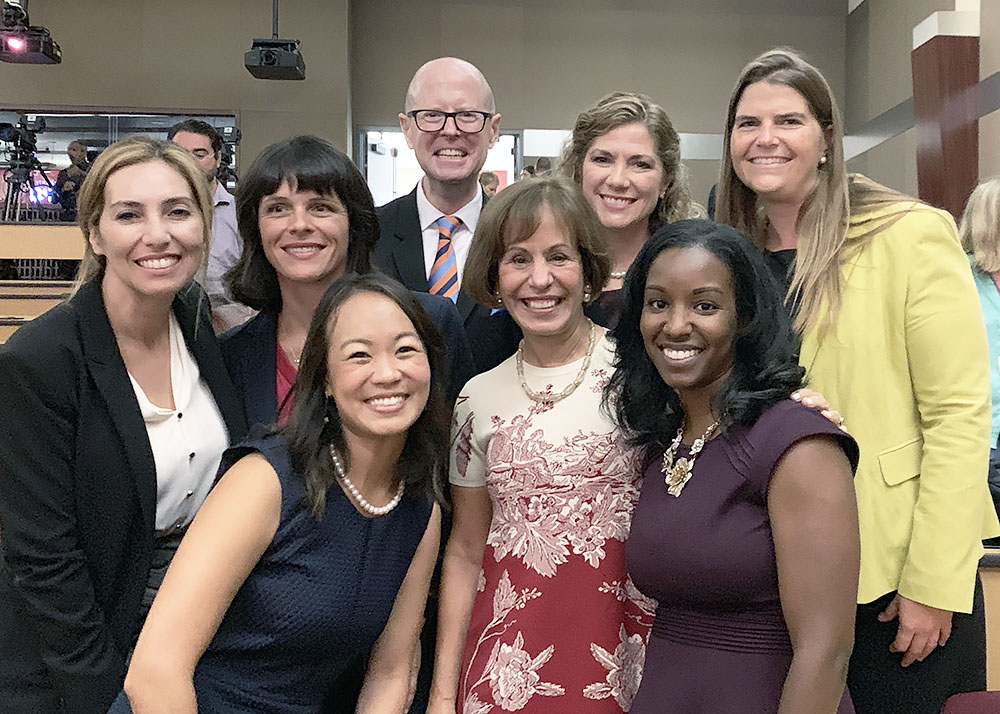Faculty symposium held ahead of USC Presidential Inauguration
September 18, 2019
Chan in the Media Conferences Faculty Lectures and Talks Research
By HSC News Staff / HSC News
USC Chan faculty members Beth Pyatak, second from left, and Sook-Lei Liew, third from left, with USC President Carol Folt. (Photo by Rene Pak)
The Health Sciences Campus community recently presented some of its best and brightest faculty members as part of the array of events celebrating the inauguration of the university’s 12th president. Carol L. Folt, PhD, took the helm at USC in July, but will be formally installed in office on Sept. 20.
The HSC Faculty Symposium, held Sept. 18 at Mayer Auditorium, brought together seven faculty members from the Keck School of Medicine of USC, USC School of Pharmacy, USC Rossier School of Education, USC Viterbi School of Engineering and the USC Chan Division of Occupational Science and Occupational Therapy, to showcase their innovative and multidisciplinary fields of study in TED-style talks. A second symposium was scheduled to be held Sept. 19 on the University Park Campus.
“It is always wonderful to remember that just right next door, or in the lab, the building across the street, or over on the other campus, there is somebody doing something amazing that you would like to know about,” Folt said. “In a great university, what we have to do is make it possible for you to keep training the next generation and make a difference in the world.”
Sook-Lei Liew, PhD, OTR/L, assistant professor of occupational science and occupational therapy at USC Chan with joint appointments in the USC Division of Biokinesiology and Physical Therapy, the Keck School and USC Viterbi; director of the Neural Plasticity and Neurorehabilitation Laboratory; and member of the USC Stevens Neuroimaging and Informatics Institute, discussed how Tinder and the latest developments in virtual reality are inspiring and influencing the latest stroke research projects in a talk titled, “Innovation through Collaboration for Stroke Rehabilitation.”
. . .
Beth Pyatak, PhD, OTR/L, associate professor at USC Chan, shared how her research in lifestyle redesign occupational therapy interventions for type 1 and type 2 diabetes patients became very personal, as well as how she has been integrating wearable technology to examine the short-term dynamic relationships between blood sugar, function and emotional well-being in the daily lives of people with diabetes.
Read the full article at HSC News.
⋯






